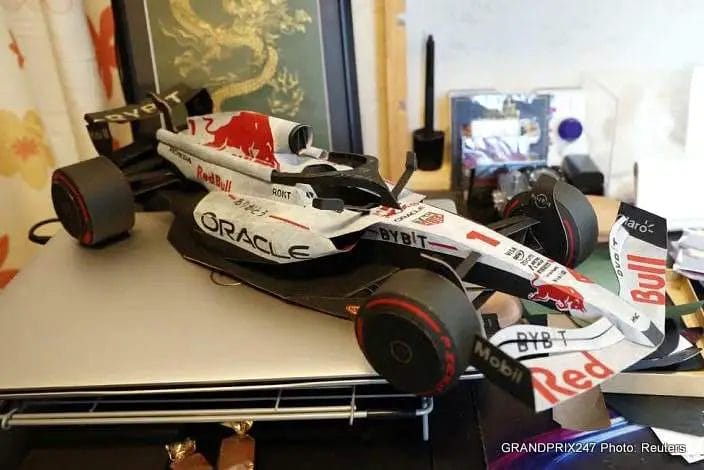Tanaka, a resident of Suzuka, the city where the first racing event took place in 1987, has spent the past nine years creating intricate replicas of cars, steering wheels, and trophies. Using the ancient art of Ise Katagami, a paper stencil method that originated over a millennium ago in the region, Tanaka brings to life Japan’s national attire, the kimono, adorning it with elaborate patterns.
As technology advances and the demand for kimonos decreases, the dwindling number of artisans practicing traditional techniques seek innovative ways to preserve and promote this art form. Tanaka, a keen Formula 1 enthusiast, found inspiration in the sport and decided to carve portraits in Ise Katagami, presenting them as gifts to the drivers. This marked the beginning of his artistic journey.
Residing just a few kilometers from the famous racetrack, Tanaka’s home serves as a workshop where he meticulously creates his creations. In the town hall building, a collection of his artworks is displayed, including a photograph capturing former world champion Sebastian Vettel holding one of Tanaka’s model trophies. This year, his intention is to gift Alpine driver Esteban Ocon with a model steering wheel, further strengthening his connection to the racing world.
Meanwhile, other local artisans are also exploring alternatives to promote Ise Katagami. One such endeavor involves creating lamps with patterns. Mitsuru Kobayashi, head of the Ise Katagami Cooperative Association, emphasizes the importance not only of preserving the technique itself, but also finding new applications to ensure its survival.
(Reporting by Irene Wang)







